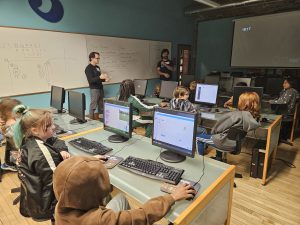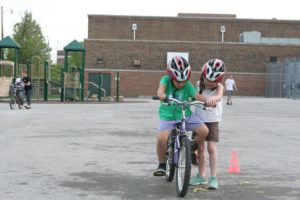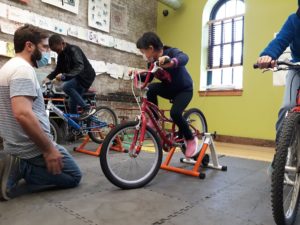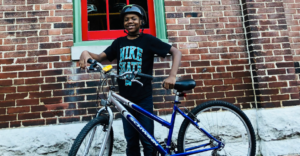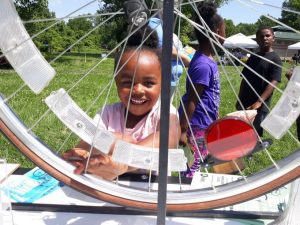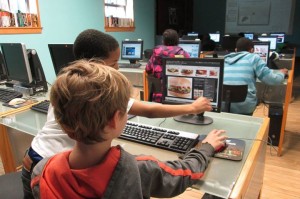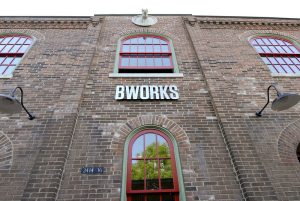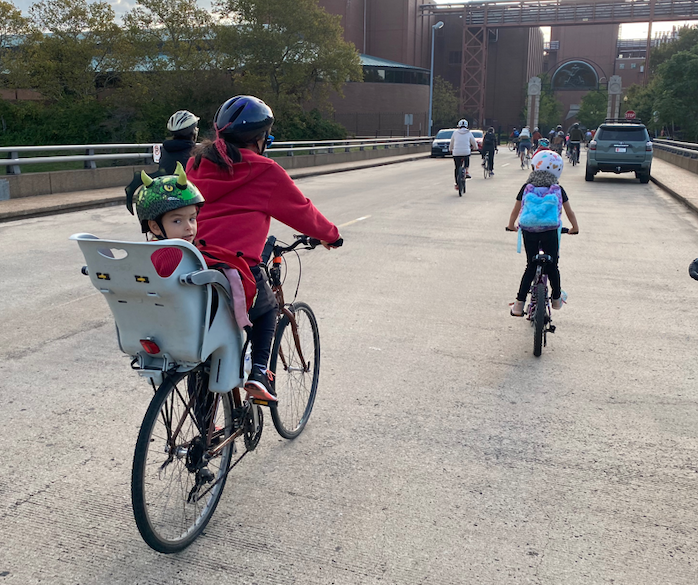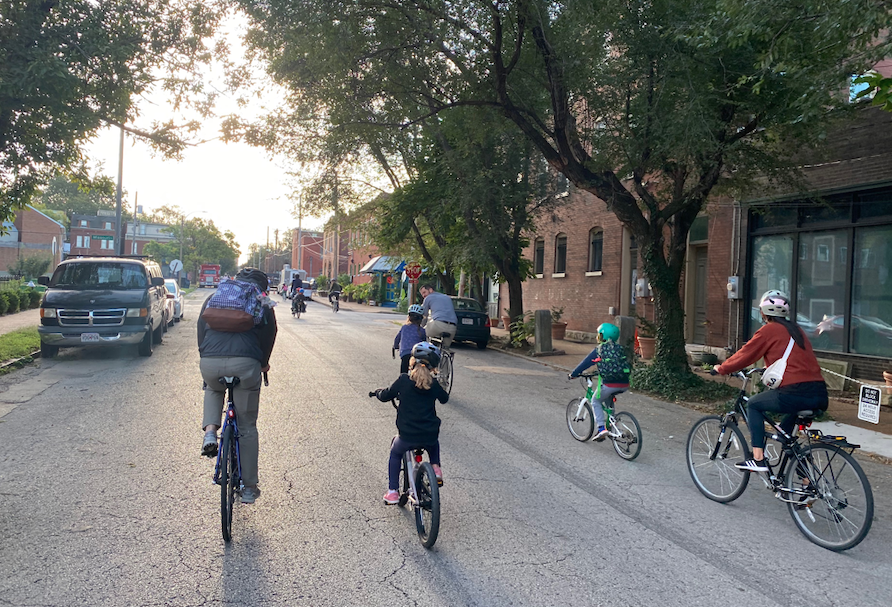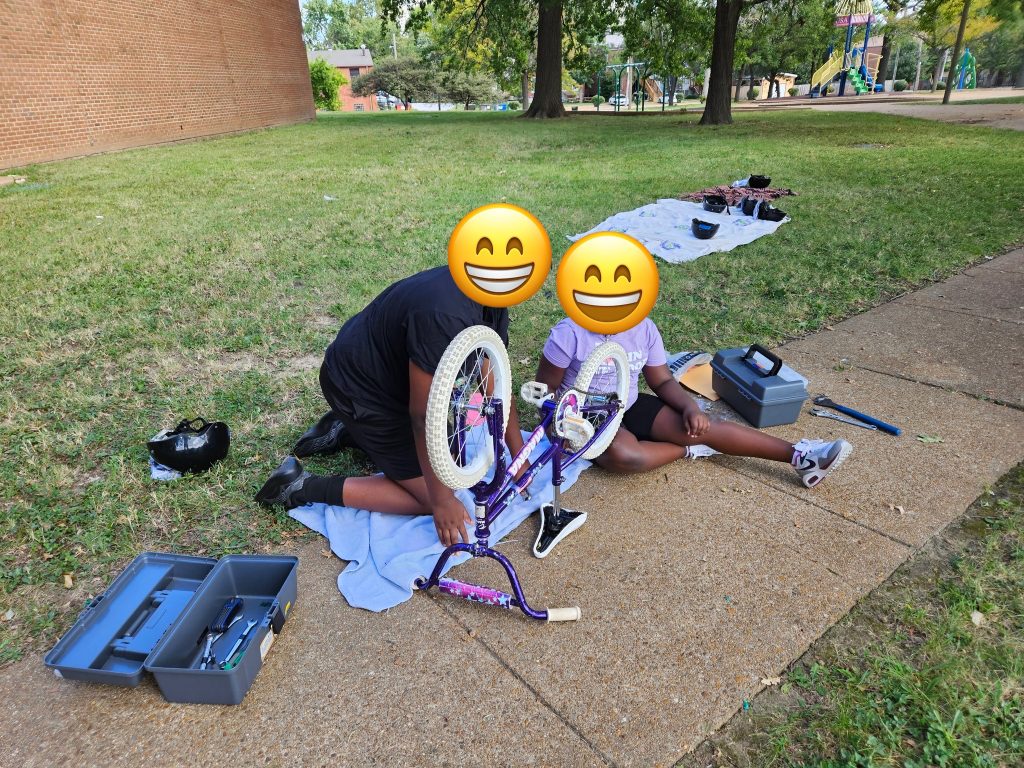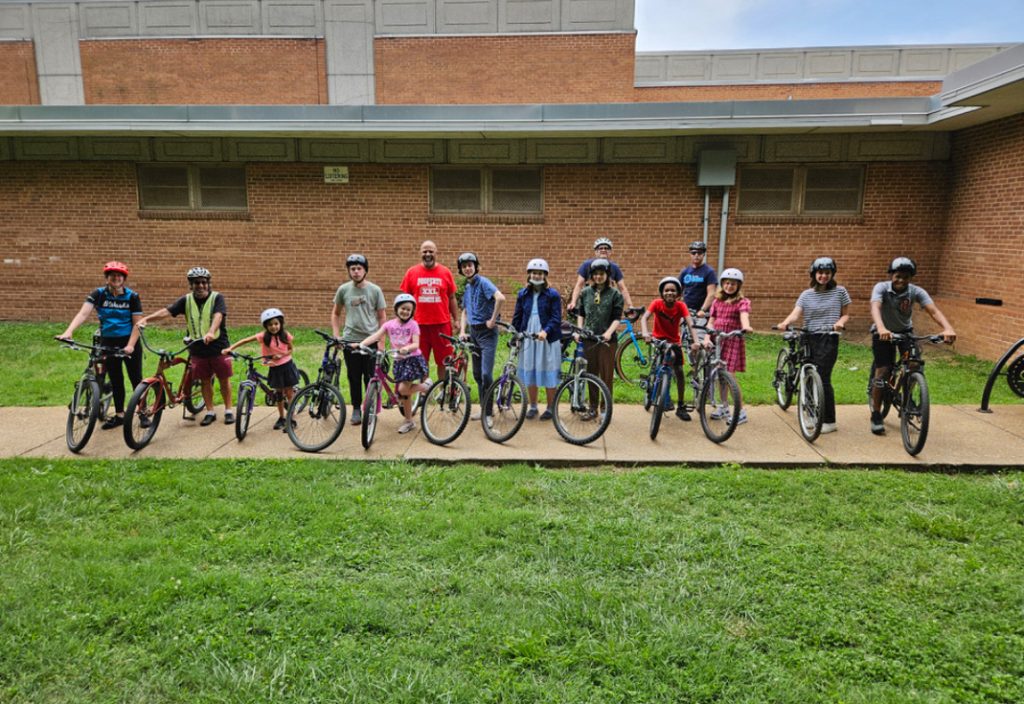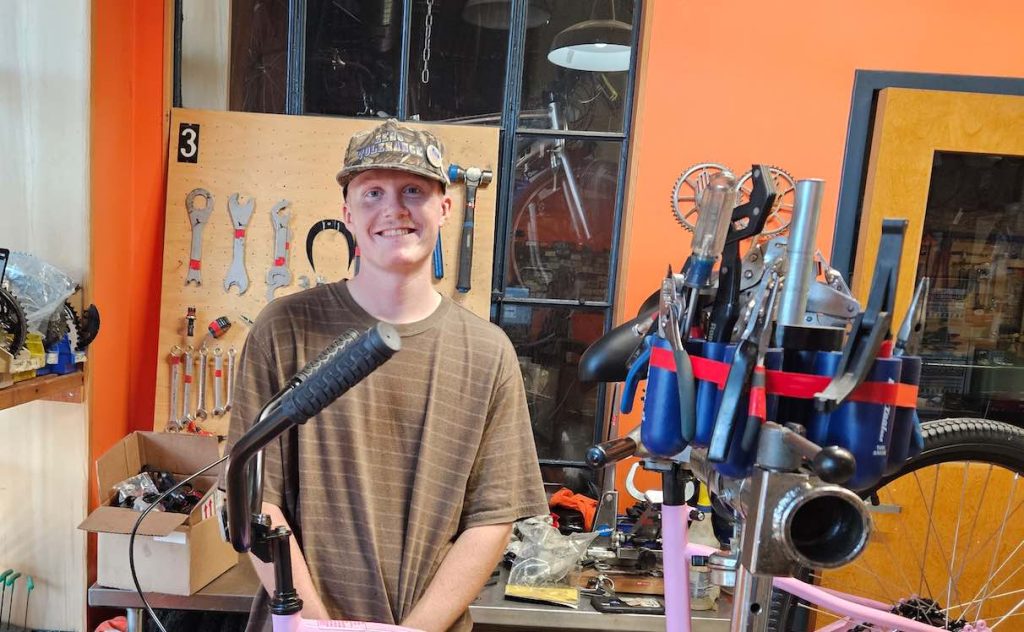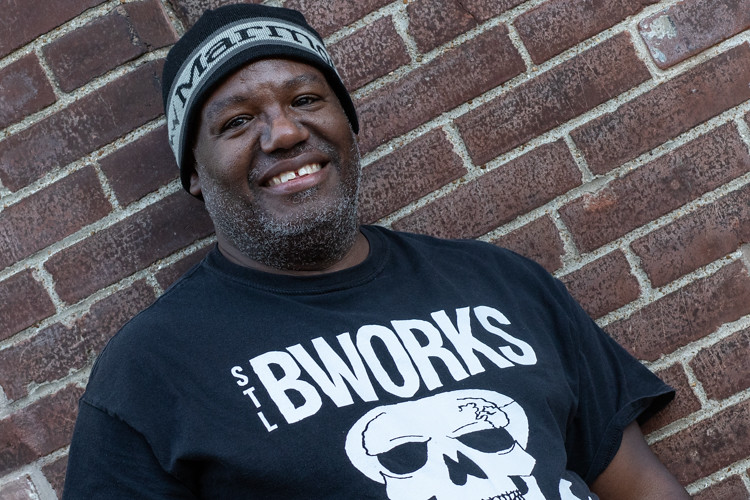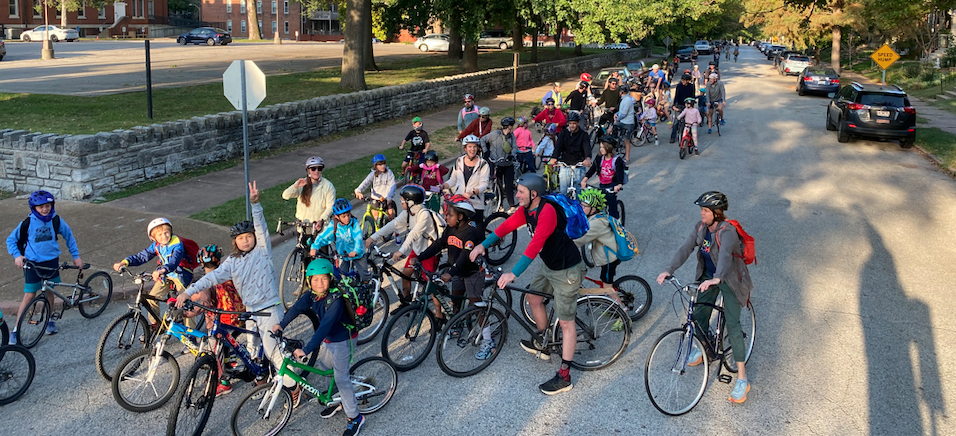
What a wonderful day it’s been in the bistate region: 10 local bike-to-school groups — each part of a growing international children’s active transportation movement known as “bike buses” (a play on “school buses”) — all pedaled their way to St. Louis-area schools today, with guidance from crews of dedicated adult helpers.
On the Missouri side, five different groups of children started at various locations across south city, eventually merging into one huge wave of riders en route to an elementary school in south city. Meanwhile, on the Illinois side, five other bike buses, plus a walking bus, headed out to five different schools in Edwardsville! BWorks staff joined in at different locations in both states on their day off to help.
Everyone was awake, excited and engaged by the time we got to school — at least all the kids were, as parents and other volunteers sought out coffee upon arrival. :) Numerous studies both locally and nationally show that kids who get to engage in physical activity before school are more awake, engaged, have less behavioral referrals and, over all, test better.
In St. Louis City, we heard kids happily shouting, “I’m riding my bike to school!!” (There were also suggestions that Spire road plates be turned into jump ramps for kids on bikes.) The excitement and joy is always high as these young cyclists build their skills and confidence, while also surely feeling like a million bucks as caring adult riders center these kids’ rights to safely move around their communities and make their way to school.
But the joy is tempered by a comment we’ve heard from kids multiple times over the years: “Why can’t every day be a bike bus day?”
Studies show that the main issue that keeps bike buses from running more consistently is not infrastructure or enforcement, but dependency on volunteers. (As one obvious example, this morning’s combined south-city group of well over 80 children plus all of the volunteer helpers had no safe infrastructure to depend on as we wound several miles through residential streets and crossed Grand, Jefferson and Gravois. The infrastructure we all thirst for is simply not available at this point, and won’t be until many of these kids have their own kids. But these rides prove that groups of kids with adult support, encouragement and safety-focused education can ride a bike to school safely en masse.)
Why can’t we ride every day, or even every week through the school year? It’s the dependency on volunteers’ time. The time and energy to coordinate multiple levels of logistics and safety preparations, map students’ home locations, make routes, handle liability and communicate with busy parents is significant indeed. It’s joyful, and difficult, work.
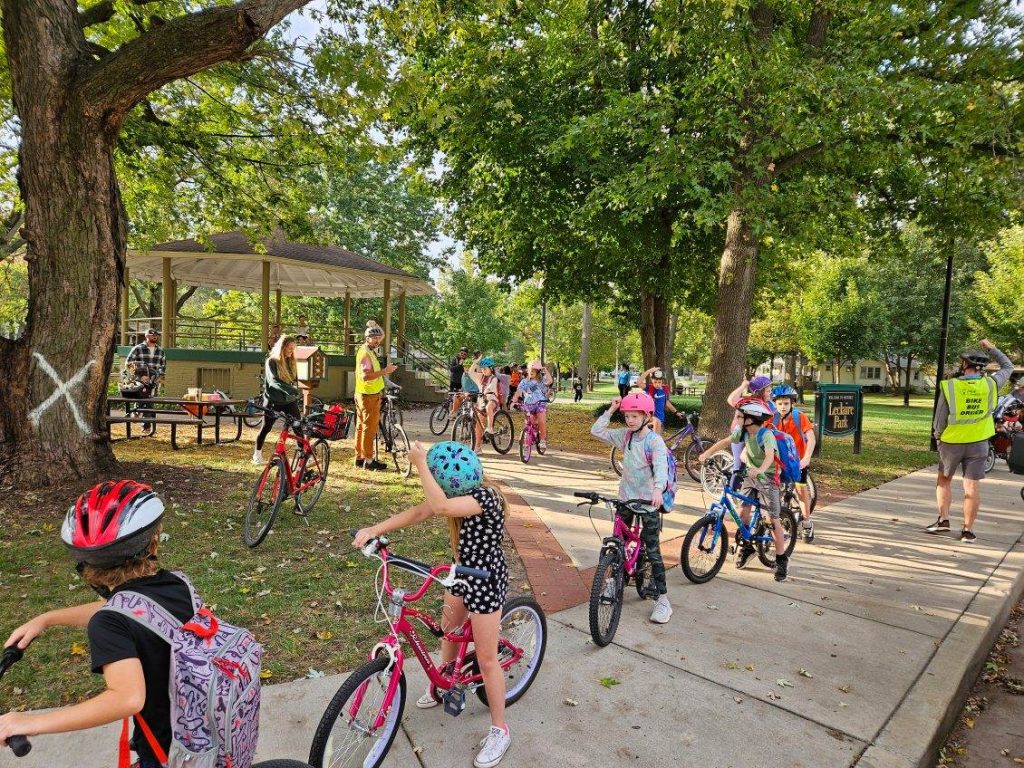
Yet as local, regional and national transportation-planning leaders grapple with escalating traffic violence, active youth transportation efforts mostly receive little to no funding. This is despite how inexpensive such programming is compared to infrastructure. And so the situation remains: If we want active youth transportation, we must depend on volunteers. And to be clear: Today’s volunteers on both the Missouri and Illinois routes were and are amazing, and clearly happy to help. But these people also have to make a living.
And so that really is the answer to the kids’ very reasonable and oft-repeated question of why we can’t do the bike bus daily or weekly — that these caring volunteers all have other responsibilities. But underlying that answer is, of course, a more disturbing fact: that despite many millions of dollars available right now, for example, in the City of St. Louis — funds we’ve all been told are supposed to be spent on making life better here — not one of those dollars is being made available for children’s active transportation activities such as bike buses. This is even as leaders tout plans to sink $300 million into infrastructure in the next few years.
This morning’s 10 bike buses to schools around the region embody the world that so many of us on the BWorks team and among our partner organizations dream of. We continue to work hard to create that world in small and big ways, day by day. These efforts are well deserving of support.
Three cheers for the bike bus,
Patrick Van Der Tuin,
executive director
St. Louis BWorks
